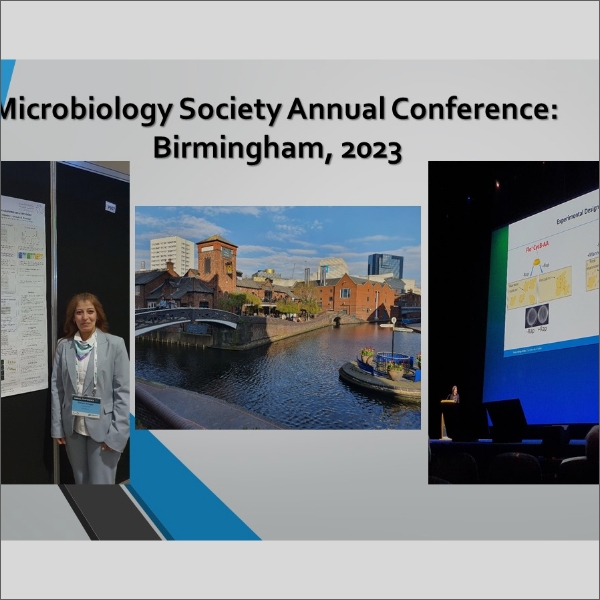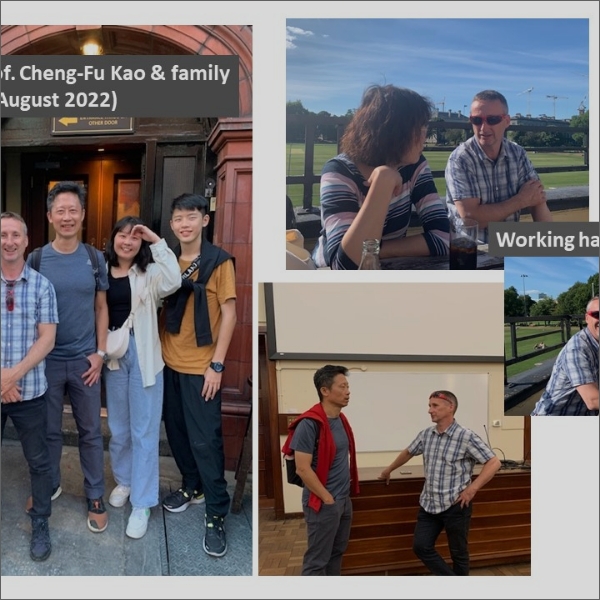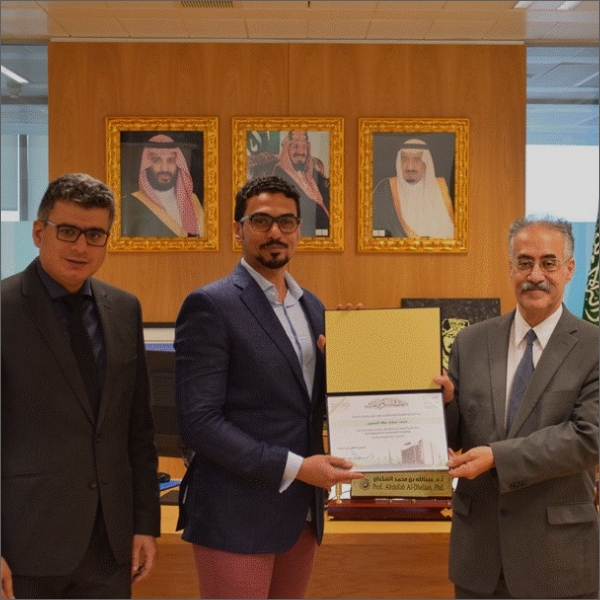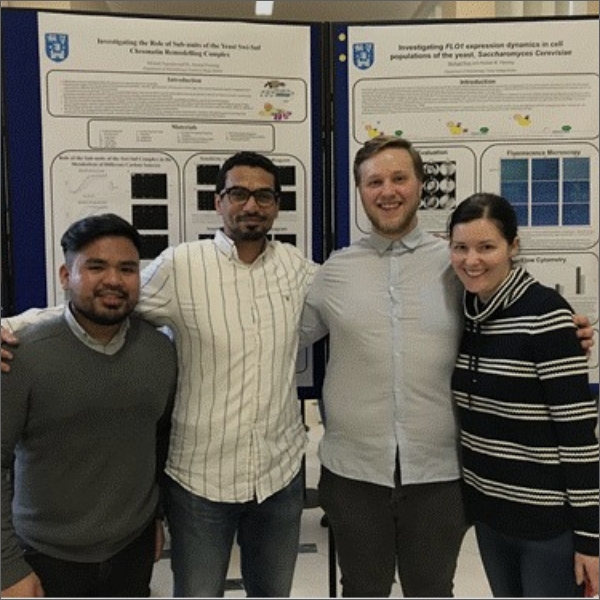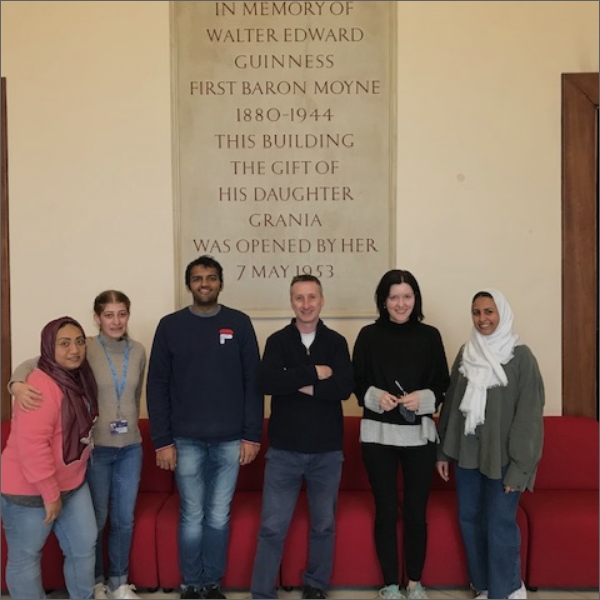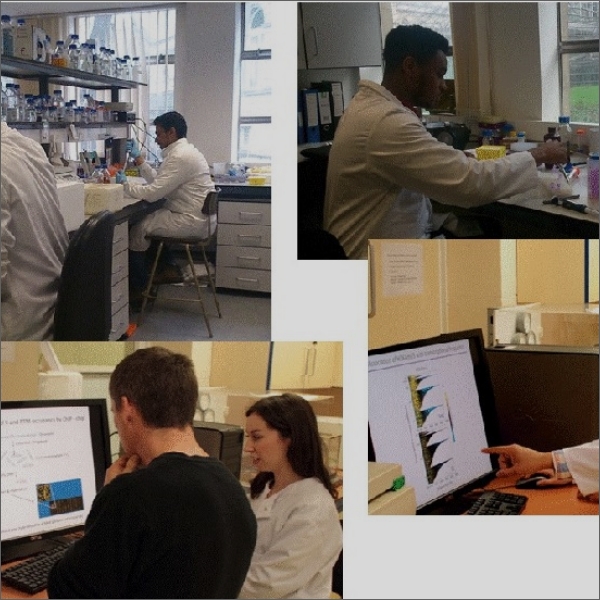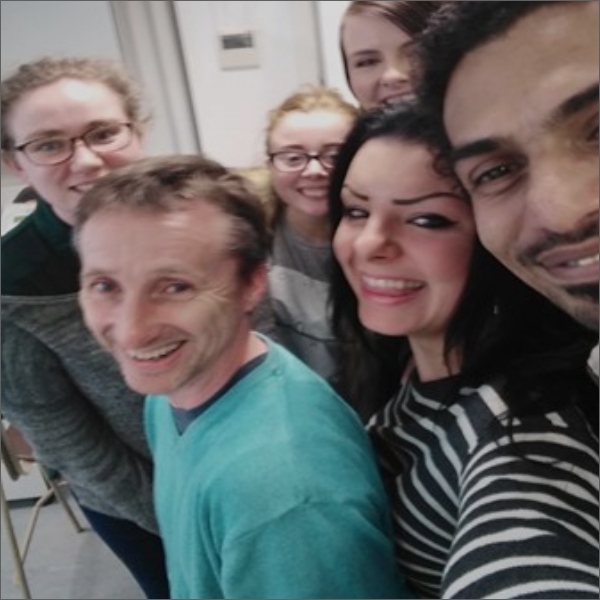About our Research
Yeast Chromatin Group
Research in my group involves using the budding yeast, Saccharomyces cerevisiae , as a model organism in which to study the role of chromatin remodelling during various biological processes.

In human and other eukaryotic cells, the DNA does not exist as a naked molecule. Instead, it is tightly associated with various proteins in a structure known as ‘chromatin'; a term first coined by the German biologist Walther Flemming in 1881. The fundamental sub unit of chromatin is the nucleosome which consists of approximately 146 base-pairs of DNA wrapped around an octamer of histone proteins (two each of histones H3, H4, H2A and H2B). At the most basic level, these nucleosomes are positioned at intervals along the DNA to form a ‘beads on a string' structure. This structure can then fold up on itself to form higher order structures to ultimately package the DNA so that the genome can fit inside the cell nucleus (Fig. 1).

Figure 1.
Schematic to show how DNA is packaged as chromatin within the eukaryotic cell nucleus.
However, this tight packaging means chromatin is generally considered repressive to any process that needs access to the DNA, including DNA damage repair, recombination, replication and transcription.
To overcome this barrier, chromatin can be ‘remodelled’ by various mechanisms including; (i) by ATP-dependent chromatin remodelling machines, such as the Swi-Snf complex, that can either slide or completely remove nucleosomes (Fig. 2A), or (ii) via the addition of numerous post-translational modifications (PTMs) to the histones that can alter chromatin structure and function (Fig. 2B). These mechanisms can also cooperate to remodel chromatin.

Interestingly, yeast and human chromatin are very similar in structure, and yeast contains many of the chromatin remodelling factors found in human cells. Indeed, many of these factors were first identified from studies in yeast. Because yeast are quick to grow, and easy to genetically manipulate, experiments in yeast are used to underpin our knowledge of chromatin in human cells. This is becoming increasingly relevant to human health because it is now emerging that defective chromatin plays key roles in human developmental disorders, diseases such as cancer, as well as during aging.
Current Research:
We are currently investigating chromatin remodelling during:
1. Transcription initiation.
We are investigating the regulation of FLO1 gene transcription which is under the control of the Swi-Snf co-activator and the Tup1-Ssn6(Cyc8) co-repressor complexes . Swi-Snf acts to remove nucleosomes at the gene promoter to enable transcription, whereas Tup1-Ssn6 stabilises nucleosomes at the promoter to block transcription. Understanding their mechanism of action in yeast will help delineate the role of these evolutionary conserved complexes in human cells, where defective chromatin remodelling has been associated with developmental disorders, and diseases such as cancer. This work is funded by a Trinity College Award.

Figure 3.
(A) Indirect end-labelling mapping of the DNase I cleavage pattern of chromatin in the FLO1 upstream region. A DNase I hypersensitive site overlaps with the binding site of Cyc8-Tup1 and greatly expands in its absence. (B) Composite map of gel intensity traces of A (shown for chromatin only; black traces). Also shown is the wt chromatin MNase pattern (grey trace). See references Fleming et al ., BBA-GRM, 2014, and Fleming and Pennings, EMBO, 2001.
2. Transcription elongation.
During transcription elongation , nucleosomes are evicted to allow passage of RNA polymerase, and reassembled in its wake to maintain chromatin structure and prevent aberrant transcription initiation from occurring within transcribed genes. We are investigating if H2B monoubiquitylation (H2Bub) coordinates the activity of histone chaperones to govern the nucleosome dynamics required for efficient transcription elongation. This work is funded by The Wellcome Trust.

Figure 4.
Model for the roles of H2B ubiquitylation (H2Bub) and Spt16 in nucleosome dynamics during transcription elongation at GAL1 (Fleming et al., Mol Cell, 2008.
3. Yeast stationary phase.
We are investigating the role of chromatin remodelling during yeast stationary phase (SP), which has emerged as an excellent model for cellular quiescence and apoptosis . When Saccharomyces cerevisiae is starved of glucose, the cells enter SP and form two developmentally distinct populations: a quiescent (Q) population of daughter cells that can re-enter the cell cycle, and a nonquiescent (NQ) population of mother cells that are programmed to undergo cell death. We can separate these populations and have examined the distribution of various histone post-translational modifications across the genome of quiescent cells. Current work aims to determine the contribution of these PTMs towards cellular quiescence and apoptosis. This work is funded by Science Foundation Ireland (SFI).

Figure 5.
Figure to show (A) yeast growth into Stationary Phase (SP) and (B) separation of SP yeast cultures into quiescent (Q) and non-quiescent (NQ) populations following Percoll density gradient centrifugation. Fig. B is courtesy of Allen et al ., JCB, 2006.
/prod01/channel_3/media/tcd/microbiology/images/PTM-heat-map_Fig-6.jpg)
Figure 6.
The distribution of histone methylation marks across the yeast genome in actively growing (log) and quiescent (Q) cells. A ‘heat map
Interested in working with us?
We are always interested in recruiting talented people to the lab and in supporting applications for short-term work (Erasmus exchange students, summer students), personal PhDs, and postdoctoral fellowships such as the Irish Research Council, EMBO, HFSP and Marie Curie.
Current Collaborators:
- Prof George Miloshev, Bulgarian Academy of Sciences, Bulgaria
- Prof. Mary Anne Osley, University of New Mexico, USA
- Dr Sari Pennings, University of Edinburgh, UK.
- Prof. Gary Moran & Prof. Derek Sullivan, School of Denistry, Trinity College Dublin, Ireland.
- Dr Karsten Hokamp, Department of Genetics, Trinity College Dublin, Ireland.
- Prof. Nick Kent, Cardiff University, UK
- Prof. Ozgur Bayram, Maynooth University, Ireland.
Please email alastair.fleming@tcd.ie for an informal discussion.

